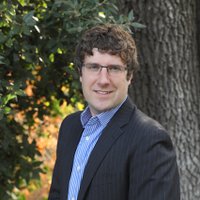
Bishal Tandukar
@bishal_tandukar
ID: 845249196814938112
24-03-2017 12:21:27
43 Tweet
20 Followers
30 Following





Huge thanks to co-authors, especially Bishal Tandukar, Delahny Vineisha Deivendran. Supported by National Cancer Institute, Melanoma Research, NIAMS, CDMRP, LEO Foundation - LEO Fondet, Tracy and Guy Jaquier. Feedback encouraged!

Found Bishal Tandukar and Meng Wang. On our way to Society For Melanoma Research congress in New Orleans



We genotyped ~300 skin cells from over 50 different donors (available in cBioPortal and dbgap). Their mutation burdens vary from person to person, site to site within each person, and cell to cell within each site. Here, we explore the latter source of variability. [2]
![Hunter Shain (@shainlab) on Twitter photo We genotyped ~300 skin cells from over 50 different donors (available in <a href="/cbioportal/">cBioPortal</a> and dbgap). Their mutation burdens vary from person to person, site to site within each person, and cell to cell within each site. Here, we explore the latter source of variability. [2] We genotyped ~300 skin cells from over 50 different donors (available in <a href="/cbioportal/">cBioPortal</a> and dbgap). Their mutation burdens vary from person to person, site to site within each person, and cell to cell within each site. Here, we explore the latter source of variability. [2]](https://pbs.twimg.com/media/Gjs10jCbMAACTH5.png)









Special thanks to Bishal Tandukar for leading this work and to fantastic collaborators, Robert Judson-Torres and iwei yeh @Yeh_lab

Also thanks to other authors… Delahny Vineisha Deivendran Aravind Kumar Bandari Rojina Nekoonam limin chen Neda Bahrani Harsh Sharma. Not on X Beatrice Weier, Noel Cruz Pacheco, Min Hu, Kayla Marks, Rebecca Zitnay

Thanks to supporters. @NCIHTAN National Cancer Institute @cdMRP NIAMS Melanoma Research LEO Foundation - LEO Fondet University of Utah Department of Dermatology at UCSF @UCSFcancer





![Hunter Shain (@shainlab) on Twitter photo Most melanocytes in heavily sun exposed skin have high mutation burdens, but we were stunned to see that there is a subpopulation of melanocytes with virtually no mutational damage. [3] Most melanocytes in heavily sun exposed skin have high mutation burdens, but we were stunned to see that there is a subpopulation of melanocytes with virtually no mutational damage. [3]](https://pbs.twimg.com/media/Gjs14INaMAACK-c.png)
![Hunter Shain (@shainlab) on Twitter photo First, we explored mutational signatures, indicating that low mutation burden melanocytes evade the worst of UV-radiation-induced mutagenesis. [5] First, we explored mutational signatures, indicating that low mutation burden melanocytes evade the worst of UV-radiation-induced mutagenesis. [5]](https://pbs.twimg.com/media/Gjs1_UmbMAAUC8W.png)
![Hunter Shain (@shainlab) on Twitter photo Second, we explored gene expression profiles, indicating that low mutation burden melanocytes occupy a more stem-like state [6] Second, we explored gene expression profiles, indicating that low mutation burden melanocytes occupy a more stem-like state [6]](https://pbs.twimg.com/media/Gjs2FXMbcAE35Jq.png)
![Hunter Shain (@shainlab) on Twitter photo Third, we explored morphologic features, indicating that low mutation burden melanocytes are smaller with fewer dendrites. Others have noted that melanocyte stem cells in the hair bulge share similar morphologic features [7] Third, we explored morphologic features, indicating that low mutation burden melanocytes are smaller with fewer dendrites. Others have noted that melanocyte stem cells in the hair bulge share similar morphologic features [7]](https://pbs.twimg.com/media/Gjs2J2bakAA-KmE.png)
![Hunter Shain (@shainlab) on Twitter photo Indeed, melanocytes that express LowMut gene expression profiles were enriched in the hair bulge. They could also be found in the interfollicular epidermis, where they were somewhat more abundant near the opening of the hair shaft. [9] Indeed, melanocytes that express LowMut gene expression profiles were enriched in the hair bulge. They could also be found in the interfollicular epidermis, where they were somewhat more abundant near the opening of the hair shaft. [9]](https://pbs.twimg.com/media/Gjs2QOSbYAAgYFY.png)
![Hunter Shain (@shainlab) on Twitter photo In summary, we believe that UV radiation will, over decades, damage interfollicular melanocytes, killing off some cells. These cells are replenished from stem cells in the hair bulge. It is a clever adaptation to rejuvenate damaged skin. [10] In summary, we believe that UV radiation will, over decades, damage interfollicular melanocytes, killing off some cells. These cells are replenished from stem cells in the hair bulge. It is a clever adaptation to rejuvenate damaged skin. [10]](https://pbs.twimg.com/media/Gjs2UkBacAA5Gn-.png)